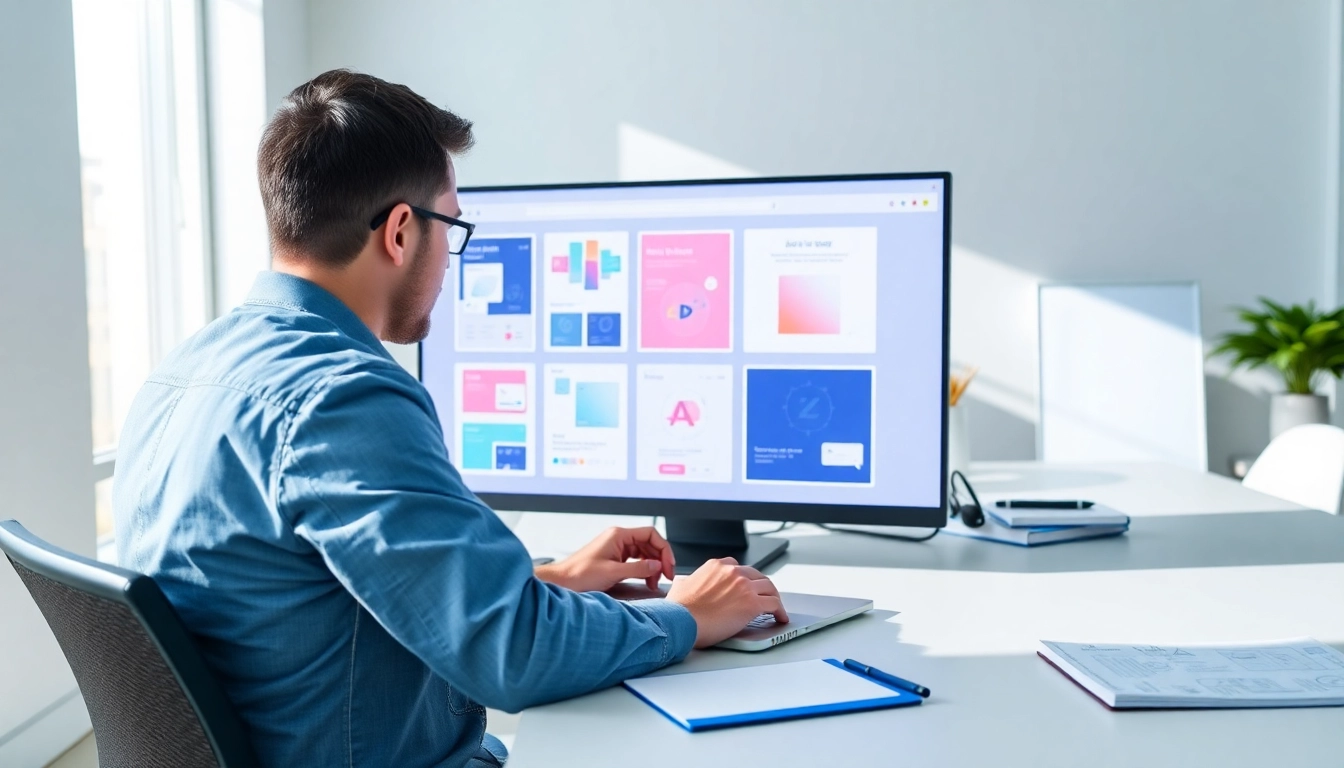
1. Introduction to AI Design Tools for Businesses
In today’s rapidly evolving digital landscape, businesses are constantly seeking innovative ways to enhance their creative processes. Among these innovations, AI design tools for businesses have emerged as a game-changing solution. These tools harness the power of artificial intelligence to simplify design tasks, allowing teams to focus on strategic aspects rather than mundane execution. This comprehensive guide delves into the world of AI design tools, exploring what they are, why they are essential for modern businesses, and how they can be implemented effectively.
1.1 What Are AI Design Tools?
AI design tools are software applications that leverage artificial intelligence algorithms to assist designers and businesses in creating visual content more efficiently. These tools can range from simple graphic generative applications to sophisticated software capable of producing complex designs and layouts. They can automate various design tasks, such as generating graphics from textual descriptions, recommending design styles based on user input, and even optimizing designs for different platforms.
1.2 Why Businesses Need AI Design Tools
As competition intensifies, businesses must not only create exceptional marketing materials but also do so swiftly and cost-effectively. AI design tools address several critical needs:
- Speed: These tools can dramatically reduce the time taken to create designs, helping businesses respond quickly to market demands.
- Cost-Effectiveness: By automating routine design tasks, companies can save on the costs of hiring specialized designers for every project.
- Accessibility: AI design tools enable non-designers to produce high-quality visuals, democratizing design capabilities across teams.
1.3 Overview of Popular AI Design Tools
Several AI design tools are currently leading the market. Here’s a brief overview of some noteworthy options:
- Canva’s Magic Design: A user-friendly platform that allows users to auto-generate designs from textual prompts, perfect for social media posts, presentations, and flyers.
- Designs AI: This tool offers a suite of capabilities including logo generation, images creation, and video production, streamlining the design process for various media.
- Leonardo AI: Tailored for graphic designers, this platform generates stunning artwork and illustrations, enhancing creative output.
2. The Benefits of Using AI in Design
2.1 Increased Efficiency and Productivity
One of the most significant advantages of utilizing AI in design is the enhanced efficiency it provides. By automating repetitive tasks—such as resizing images or generating variations of designs—AI tools can free up valuable time for designers to concentrate on higher-level creative strategies. For instance, a study by McKinsey shows that automating certain marketing functions can save up to 20% of time that would otherwise be spent on manual tasks.
2.2 Enhanced Creativity and Idea Generation
AI design tools also play a critical role in fostering creativity. By providing designers with a plethora of options and styles, these tools can serve as sources of inspiration, suggesting new design avenues that might not have been considered otherwise. For example, tools like Adobe Spark allow users to experiment with various templates and styles, effectively serving as a brainstorming partner to enhance creative decision-making.
2.3 Cost-Effectiveness for Businesses
Businesses looking to optimize their budgets can greatly benefit from AI design tools. With the ability to produce high-quality designs without the need for extensive manpower, companies can reduce hiring costs associated with graphic designers and other creative professionals. Research indicates that companies that adopt AI technologies can expect a significant reduction in operational costs, leading to improved profit margins.
3. Best Practices for Implementing AI Design Tools
3.1 Choosing the Right Tools for Your Business
Selecting the right AI design tool is critical for success. Businesses should consider their specific design needs, team capabilities, and budget constraints when evaluating options. For instance, small businesses may benefit from more straightforward tools like Canva, while larger enterprises might require comprehensive solutions like Adobe Sensei, which integrates deeply with existing design workflows.
3.2 Integrating AI Tools into Existing Workflows
Integration is key to maximizing the impact of AI design tools. Teams should evaluate how these tools can fit seamlessly into their existing design processes, ensuring that all members are on board with new software. Providing adequate training and resources will greatly enhance the adoption rate and efficacy of new tools within teams.
3.3 Training Your Team to Leverage AI Effectively
Training employees on how to use AI design tools effectively is crucial. Businesses should invest in training sessions that cover not only the functionalities of the tools but also best practices for leveraging AI capabilities. This will empower team members to utilize the tools creatively and efficiently, transforming the overall design workflow.
4. Case Studies of Successful AI Design Tool Implementation
4.1 Small Business Success Stories
Small businesses such as “Eco-Friendly Wraps,” an organic food packaging startup, leveraged Canva’s AI features to create stunning product visuals that resonated with their environmentally conscious audience. By utilizing this AI design tool, they were able to save time and costs, leading to an increase in online engagement and sales.
4.2 Large Enterprises Leveraging AI Design Solutions
Corporations like Coca-Cola have integrated AI design tools into their marketing strategies. They use AI for creating personalized marketing content using customer data analytics, ensuring that their advertisements resonate well with different demographics. This integration has allowed them to launch campaigns more efficiently and effectively.
4.3 Lessons Learned from Real-World Applications
Case studies showcase a few essential lessons: firstly, the need for aligning the capabilities of AI tools with business goals is crucial. Secondly, fostering a culture of experimentation can lead to innovative uses of AI. Lastly, continuous evaluation and adaptation are necessary to ensure that the tools remain effective as business needs evolve.
5. The Future of AI Design Tools in Business
5.1 Emerging Trends in AI Design Tools
As technology evolves, several trends are emerging within AI design tools. For instance, more tools are now incorporating machine learning algorithms that learn from user interactions, becoming more intelligent and tailored to individual preferences over time. This trend is expected to result in increasingly personalized design experiences for users.
5.2 Predictions for the Design Industry
The design industry is poised to undergo significant transformation as AI tools become more prevalent. Predictions indicate that design will shift towards becoming more collaborative, with AI serving as a creative partner rather than a replacement for human designers. This shift will likely spur a new wave of innovation in design thinking and execution.
5.3 Adapting to Changes in Design Technology
To remain competitive, businesses must stay ahead of trends and be willing to adapt to changes in design technology. This involves keeping abreast of new developments in AI and continually assessing the effectiveness of current tools. Companies that invest in ongoing training for their teams will likely lead the path toward future innovations in design.








